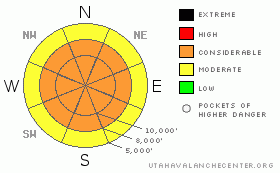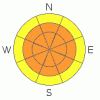WPG did not get out yesterday, and will not get out today. Operations planning page is here.
The last of the Brighton Discount tickets have been reduced to $45, with all proceeds going to the Friends of the Utah Avalanche Center. Click HERE for details.
The Friends of the Utah Avalanche Center is hosting a Level 2 avalanche class in February which is now open for registration by going to the Black Diamond retail store. More information is HERE.
Tickets are now available for the annual Backcountry Awareness Dinner on February 13th, with registration through the Snowbird Renaissance Center.
Beacon training parks are up and running! There is one at Snowbasin, one on the Park City side at the top of Canyon’s gondola, one in Little Cottonwood near the Snowbird parking structure on the bypass road, and in Big Cottonwood a training park is at the west end of Solitude's lower parking lot.
If you want to get this avalanche advisory e-mailed to you daily click HERE.
For a text only version, the link is on the left side bar, near the top.
UDOT highway avalanche control work info can be found by calling (801) 975-4838.
Our statewide toll free line is 1-888-999-4019 (early morning, option 8).
The UAC depends on contributions from users like you to support our work. To find out more about how you can support our efforts to continue providing the avalanche forecasting and education that you expect please visit our Friends page.
Your snow and avalanche observations help everyone in the backcountry community. Please let us know what you're seeing by leaving a message at (801) 524-5304 or 1-800-662-4140, or email us at uac@utahavalanchecenter.org. (Fax 801-524-6301).
The information in this advisory is from the U.S. Forest Service, which is solely responsible for its content. This advisory describes general avalanche conditions and local variations always occur. This advisory does not apply to ski areas or highways where avalanche control is normally conducted.
Bruce Tremper will update this advisory by 7:30 tomorrow morning. |




